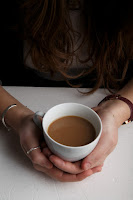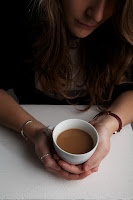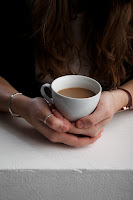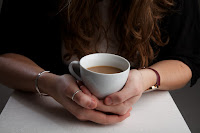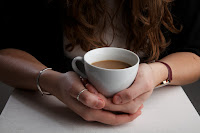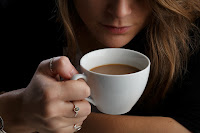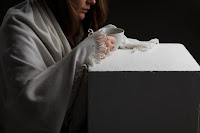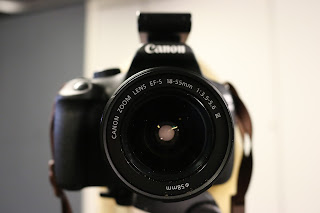Unit 32: Experimental Imagery
Activity One: Faceless Portrait
Research:
Definition's: Portraits
General definition: Portrait is described in dictionary as depictions of a person or a persons likeness in different forms of media, most commonly using only the face or head and shoulders.
Personal definition: portraits are Images of a person, animal or their equivalent, as long as a interacting factors are present in a image even if it is only a snapshot of a beings life and not the themselves or their likeness. But most portraits depict images of human features, the feature most focused on is the portrait of the face or head and shoulders, but this is not the only possible depiction of personality or humanity out of a image, depending on definition of portrait images of other anytime could be used or even a indirect photo like a shadow could be used to represent a portrait of some one or even something.
Personal definition: portraits are Images of a person, animal or their equivalent, as long as a interacting factors are present in a image even if it is only a snapshot of a beings life and not the themselves or their likeness. But most portraits depict images of human features, the feature most focused on is the portrait of the face or head and shoulders, but this is not the only possible depiction of personality or humanity out of a image, depending on definition of portrait images of other anytime could be used or even a indirect photo like a shadow could be used to represent a portrait of some one or even something.
Portrait Images & Photographers
 |
| Photograph Of Double Exposure Portrait Double Exposure Photograph Is Usually Achieve By Taking Two Photos Using The Same Film But Digital Editing Is The Best Method |
Faceless Portrait Photographs & Photographer
 |
| Photograph Of Person Hidden Under A Vail With The Shape Of The Person Standing Out |
 |
| Photograph Of A Bizarre Situation With A Woman's Face Covered With Lettuce On Her Face This Image Could Be A Parody Of You Are What You Eat. |
 |
| This Is A Portrait That I Took Which Shows Me Interacting With The Environment |
 |
| A Portrait I Previously Took Of A Person Looking Away From The Camera |
Martin Parr
British photojournalist Martin Parr was born in Epsom, Surrey on 23rd May 1952, at a young age he was a driven photographer as at the age of 14 he wanted to become a documentary photographer and studied his photographic craft in Manchester metropolitan university. His photos capture the more primate/ primitive side of human behaviour in a mocking and cynical way which could even be described as sarcastic. He looks at the minute details of a subject and their environment and the way they are interact within the frame. His satirical style of photography also captures the lives of the people in the British class system, with most of his work focusing on the life's of the working classes which can be seen clearly it the his 1999 film Think Of England.
Bryan Durushia
A Young photographer from Minnesota called Bryan Durushia experiments with photography and its concepts. He has a fascination with nature and also the surreal both of which are clear in his photography, he takes portrait photos commonly outside in rural areas and uses surreal imagery to cover the faces of his subjects. Each Photo bryan takes has a world of its own but coinciding in the same themes of nature & people mixed with a element of the surreal.
Ideas:
Use Parody, satire or bizarre scenario
Use Parody, satire or bizarre scenario
Change dynamic of object
Long exposure & use of blur
focusing on actions of the subject
The interesting features of the subject
Capture personalty
Interaction with environment
Philosophical meaning
Shadows
Composite images
Editing/ Photoshopping the image
Commercial imagery
story or narrative?
Photographs
I took my images in the literal sense, hiding part or all of the face out of shot. the images show more emotion than story, manipulating viewers to desire to want and experience the same emotion it the same situation, this technique can be used to appeal to some peoples insecurities and is useful in advertisements, the balance between professional and amateur photography can help people identify with the image as it is similar to what they may have achieved while out, taken images with a over saturating flash or lack of flash can be used. when making a faceless portrait having elements in the image that are identifiable are important for people to self implant into the image but when not using a face it would seem easy to identify the ability to self represent onto the image but you would have some elements that are recognisable with identifiable emotion in the body language or in the posing by using lines of action and dead space to make the image interesting.
Clifton studio
while at clifton photographic studio I attempted an array of photographs reminiscent of a tea or coffee advertisement, the effect I aimed to achieve was to create a very modernist set of images which were simple and minimalist to appeal to a more young independent demographic. Using two soft boxes I was able to create a soft warm light that compliments the atmosphere and emotion in the image.
Group work
while in the city bristol college I used a studio setup to create posed and silhouette photos which physically obscured the face, using a snoot at the back of the head of the subject created a highlight which becomes a halo around the edges of the subject
Photos Taken
when photographing at Clifton photographic company I used the studio to create a large selection of images that didn't make the final cut
while at College there were a large collection of good images which didn't make the chosen few,
techniques covered, camera, lighting, direction
process & experience (plan? personal, persons)
success & rejects
Looking Through
Research
The term if been given to translate into images is "looking through", but what dose it mean to look through? There are many different ways to describe and show images looking through in both the visual and literal sense by using capture as my means of looking through both in digital and interpreted forms of capture were used, I also used objects well known for their transparency while modifying the physical transparency of the objects with light liquids & solids for interesting effects
Export & Experiment with the concept
I need to look into different ways to interpret the concept of "looking through" :
Physical: transparent
metaphorical:
literal: through something
surrealist: the magical & spiritual
Physical: transparent
metaphorical:
literal: through something
surrealist: the magical & spiritual
Photographer
Vivian Maier
Maier was an US-French street photographer who was a unknown person prior to her discovery by Photography critic & collector John Maloof. After the publishing her works she gradually gained recognition as a photographer, as a photographer Maier heavily experimented with what could be captured in film, many of the experimental images Maiers took experimented with images that could be described as Looking through.
As a photographer Maiers took a great many photographs using windows and mirror to demonstrate the process of literal looking through but the ways she captured the images gave the images a level of serealism, this deep understanding of the creative possibilities of photography is shown throughout her photographic work.
Images Taken
When using the concept of looking thought I took the brief literally by showing the process of capturing a photograph, showing the outcome of the image spotted through the camera.
The following images are a reverse of the previous images and show instead of the method of capture but the iris to the viewfinder, showing a hint of who was behind the camera looking for ones image.
Scanning Still-Life & Scanography
scanography is the form of photography which specialises in the creation of artistic digital images using a flatbed scanner,
Still life photographs and paintings are images of sets of items displayed in a way to display a mysterious message using the common symbolism of the objects used in the images.
Still life photographs and paintings are images of sets of items displayed in a way to display a mysterious message using the common symbolism of the objects used in the images.
Research
 |
| By Kevin Best |
Objects & their common symbolism
Skulls: symbolise death or mortality
Fruit: shows fertility but can mean different thing
Light: its meaning changes with the change of its effects on the image and the the way it interacts with the objects displayed.
Feathers:
Birds:
Shells: sensuality
Lemons: deceptive allure or earthly beauty
Pearls:
mirror: vanity or truth
Instrument,Broken: Death or discord
Objects & their common symbolism
Skulls: symbolise death or mortality
Fruit: shows fertility but can mean different thing
Light: its meaning changes with the change of its effects on the image and the the way it interacts with the objects displayed.
Feathers:
Feathers:
Birds:
Shells: sensuality
Lemons: deceptive allure or earthly beauty
Pearls:
mirror: vanity or truth
Instrument,Broken: Death or discord
Process of scanning Photographs
Practise Images Created
when using the scanner acetate
working together with friends we each gave advice to the help one another start the scanning work
this first image
this scan was crested with a white background by taking the cover off the scanner
Images of Items of personal relevance
Poetic imagery
possible meanings of each item
Symbolism used in images
the objects and my interpret symbolism
(try to symbolise the years birth in spring)
Camera-less Photography
Susan Derger: shadow catchers
Susan Derges is a British photographer & artist who is well known for her photograms of water. Her images reveal the hidden forces of nature, from the patterns of sound waves to the flow of rivers. She used the landscape at night as her darkroom, submerging large sheets of photographic paper in rivers and using the moon and flashlight to create the exposure. she explains her use of water as a metaphor for transformation with a sense of wonder at the underlying orderliness within seeming chaos, of the motion and activity of the water. She described her work as sense of place in the way she captures parallel between two interconnected worlds which she first witnessed while examining a pond in Devon, she noticed how when the sun went through frog spawn in the pond there was a shadow print on the rocks of the pool. Susan shows water in such a mystical way to portray the magical world of water for its role in the miracle for life and on its role in sustaining everything we depend on. To Susan the water prints show a dream state of the imagination & demonstrates the dynamic beauty of nature and the way it is frozen history in a time capsule. Her works can be seen and described as alchemical, transformative acts that test the threshold between matter and spirit, while showing the landscape in a surreal way not conventionally seen.
To creating images in the darkroom we put sheets of photo-paper submerged in water & subjected the water to moment just before exposing the photo-paper to light. After going the development process
Images:
Phase 2 images taken
Due to a lack of a scanner I used my camera to photograph the image
Evidence of scanning
Practise Images Created
when using the scanner acetate
working together with friends we each gave advice to the help one another start the scanning work
this first image
working together with friends we each gave advice to the help one another start the scanning work
this first image
this scan was crested with a white background by taking the cover off the scanner
Images of Items of personal relevance
Poetic imagery
possible meanings of each item
possible meanings of each item
Symbolism used in images
the objects and my interpret symbolism
the objects and my interpret symbolism
(try to symbolise the years birth in spring)
Camera-less Photography
Susan Derger: shadow catchers
Susan Derges is a British photographer & artist who is well known for her photograms of water. Her images reveal the hidden forces of nature, from the patterns of sound waves to the flow of rivers. She used the landscape at night as her darkroom, submerging large sheets of photographic paper in rivers and using the moon and flashlight to create the exposure. she explains her use of water as a metaphor for transformation with a sense of wonder at the underlying orderliness within seeming chaos, of the motion and activity of the water. She described her work as sense of place in the way she captures parallel between two interconnected worlds which she first witnessed while examining a pond in Devon, she noticed how when the sun went through frog spawn in the pond there was a shadow print on the rocks of the pool. Susan shows water in such a mystical way to portray the magical world of water for its role in the miracle for life and on its role in sustaining everything we depend on. To Susan the water prints show a dream state of the imagination & demonstrates the dynamic beauty of nature and the way it is frozen history in a time capsule. Her works can be seen and described as alchemical, transformative acts that test the threshold between matter and spirit, while showing the landscape in a surreal way not conventionally seen.
To creating images in the darkroom we put sheets of photo-paper submerged in water & subjected the water to moment just before exposing the photo-paper to light. After going the development process
Images:
Phase 2 images taken
Due to a lack of a scanner I used my camera to photograph the image
Evidence of scanning
Memo's:
Book:
Film:
Web:
http://www.scannography.org/
www.photoforager.com/archives/susan-derges
http://www.easy-oil-painting-techniques.org/still-life-symbolism.html
http://www.bestshots.com.au/htm/about.html
Pintrest
Adobe TV
Links:
http://digital-photography-school.com/a-beginners-guide-to-light-modifiers/
http://www.digitalcameraworld.com/2012/04/12/10-rules-of-photo-composition-and-why-they-work/
Web:
www.photoforager.com/archives/susan-derges
http://www.easy-oil-painting-techniques.org/still-life-symbolism.html
Pintrest
Adobe TV
Links:
http://digital-photography-school.com/a-beginners-guide-to-light-modifiers/
http://www.digitalcameraworld.com/2012/04/12/10-rules-of-photo-composition-and-why-they-work/
Adobe TV
Links:
http://digital-photography-school.com/a-beginners-guide-to-light-modifiers/
http://www.digitalcameraworld.com/2012/04/12/10-rules-of-photo-composition-and-why-they-work/








